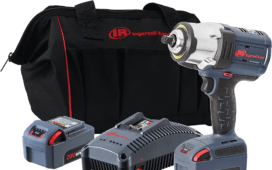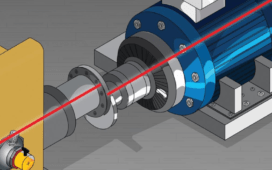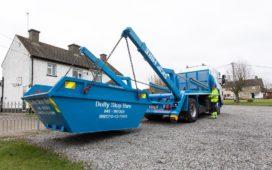Shaft laser alignment is also known as coupling correction and is the process of aligning two or more rotating shafts in a straight line. This essential process can ensure that all machine components are running correctly and won’t cause undue damage to the wider system. The process involves looking at both the vertical and horizontal planes to try and ensure they are rotating on a common axis, meaning they are pulling and turning on the same planes. When you have the tools ready to manage and maintain these components you can ensure your machines run optimally for a longer time. This maintenance solution is far more effective as its data-centred approach gives you information down to the micrometre. Read on to find out more about using these advanced measurement systems.
The System
The hi-tech monitoring systems consist of a light emitter and a light sensor that work together to track a plane or surface. The emitter is mounted using a bracket and chain to one shaft, and the sensor is mounted to the other. The emitter produces a laser directed across the shaft to the sensor in a single beam design. The single beam system is potentially the most common one in use, although dual systems are also available. Dual systems use both sides, emitting a laser and simultaneously sensing the opposite beam. In either situation, the shaft is rotated to find the center lines of rotation between the two moving elements as the light is emitted. This placement and design give you exact readings explaining the misalignment level and how best to correct it. With data at your disposal, you can ensure that the machine parts are working perfectly when you’re done.
Sensors And Software
The sensors send all gathered information to a display unit showing misalignment details. Units may be under a couple of classifications, either offset, have an angular misalignment or both. Once the misalignment has been identified, the relevant part or component must be adjusted vertically and horizontally as much as is needed. The main goal of the process is to come as close to perfectly aligned as possible. The software that works with this system will take into account allowable tolerances that manufacturers set to determine if realignment is necessary. Working with these tools and their driving software is more user-friendly than the traditional methods and ensures you have more access to up-to-date information.
Working At Your Facility
The laser alignment process can be incorporated as routine maintenance on your facilities’ critical equipment. When utilized in this way, you can allow for a baseline to be established that can help you see misalignment and needed changes when they occur. You can also use this system to check recent equipment installations and ensure they are properly assembled and ready to work. This maintenance practice is usually done after a few months to ensure the equipment runs within the designed parameters. Using this as a yearly maintenance tool ensures you can monitor and manage your machines more effectively. With the right insight and data, you can have more information to refine your operation and get more life out of your machines. Fully functional components ensure less downtime, more productivity, a safer staff environment and better profits for your business.
The Importance Of Shaft Alignment
Improper shaft alignment is the key reason for roughly half of all rotating machine breakdowns in many industrial settings. Skewed components cause excessive vibration and put high-stress loads on seals, packing, couplings and bearings. When components are not correctly aligned they require more power to drive and more effort from the engine or battery. This added stress can break other components and lead to decreased productivity from the shaft component itself. It can also cause temperature fluctuations due to friction, energy loss and even motor failure. By properly aligning these moving parts, you will use less lubricant, lower noise levels, increase equipment life and waste less energy. These refined operations elements also create a better space for workers as it ensures there is less heat and tension in the system, which could cause catastrophic failure and potential harm to those nearby.
Laser alignment is essential for many businesses, providing an operational maintenance solution that ensures your machines are working correctly. With the right tools and software available, you can enhance your productivity and reduce breakdowns for your business. Contact us today to find out more about these services.







